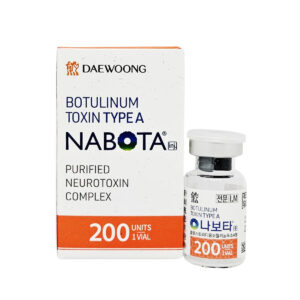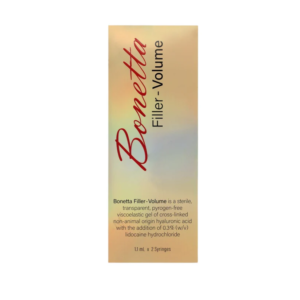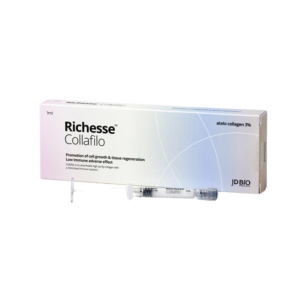No products in the cart.
Need help? Write to us support@fillersfairy.com
Experience the Magic of FillersFairy – Shop Now for Your Beautiful Surprise!
- DERMAL FILLER
- BODY FILLER
- SKIN BOOSTER
- NCTF 135HA
- DIVA EYE PN
- DIVA FACE PN
- AMI NAD+
- NadReju
- Miracle Touch BR
- Miracle Touch Up
- Regenovue Aqua Shine Plus
- Vitaran i
- Vitaran i 2
- Hyalace
- Elaxen PN
- PuriColl
- Rejeunesse Sparkle
- ASCE+ IRLV
- AestheFill
- AETER PURI EYES
- Ami Eyes
- Aqua Exosome
- ASCE Plus SRLV
- Celosome Aqua
- Curenex Glow
- Cytocare
- Exo-one
- High Inj
- Hyaron
- Juvederm Skinvive
- Kiara Reju
- Lapuroon
- Miracle
- Puri Hilo PN
- Puri Pdrn
- Purilips
- Rejuran
- Revitrane HA20
- Richesse Collafio
- Save B32
- Save B32SP
- BOTULINUM TOXIN
- FAT DISSOLVING
- HAIR TREATMENT
- IV THERAPY
- NUMBING CREAM
- PLLA/PCL/CA+
- CONSUMABLES
- THREAD
- AESTHETIC COSMETICS
- PEELING
Сall our consultants or Chat Online
+1(912)5047648
- DERMAL FILLER
- BODY FILLER
- SKIN BOOSTER
- NCTF 135HA
- DIVA EYE PN
- DIVA FACE PN
- AMI NAD+
- NadReju
- Miracle Touch BR
- Miracle Touch Up
- Regenovue Aqua Shine Plus
- Vitaran i
- Vitaran i 2
- Hyalace
- Elaxen PN
- PuriColl
- Rejeunesse Sparkle
- ASCE+ IRLV
- AestheFill
- AETER PURI EYES
- Ami Eyes
- Aqua Exosome
- ASCE Plus SRLV
- Celosome Aqua
- Curenex Glow
- Cytocare
- Exo-one
- High Inj
- Hyaron
- Juvederm Skinvive
- Kiara Reju
- Lapuroon
- Miracle
- Puri Hilo PN
- Puri Pdrn
- Purilips
- Rejuran
- Revitrane HA20
- Richesse Collafio
- Save B32
- Save B32SP
- BOTULINUM TOXIN
- FAT DISSOLVING
- HAIR TREATMENT
- IV THERAPY
- NUMBING CREAM
- PLLA/PCL/CA+
- CONSUMABLES
- THREAD
- AESTHETIC COSMETICS
- PEELING
Nabota (900kDa botulinum toxin) offers sharper muscle relaxation lasting 3-4 months, while Revolax (500kDa HA filler) provides volumizing effects for 6-12 months.
Nabota excels in precise wrinkle reduction, whereas Revolax enhances lip/cheek contours with minimal swelling. Onset time differs: Nabota works in 3-7 days, Revolax shows immediate results. Choose based on target area and desired longevity.
Table of Contents
ToggleHow Long Each Lasts
When choosing between Nabota and Revolax, one of the biggest factors is how long results last. Based on clinical studies and real-world data, Nabota typically lasts 3-5 months, while Revolax maintains its effect for 4-6 months on average. However, individual factors like metabolism, injection technique, and dosage play a role. For example, first-time users may see Nabota fade slightly faster (around 3 months), whereas repeat treatments can extend its duration to 4-5 months. Revolax, on the other hand, tends to hold up better over time, with some patients reporting visible effects up to 7 months in high-movement areas like the lips.
| Factor | Nabota | Revolax |
|---|---|---|
| Average Duration | 3-5 months | 4-6 months |
| First-Time Users | ~3 months | ~4 months |
| Repeat Treatments | 4-5 months | 5-7 months |
| High-Movement Areas (e.g., lips) | 2.5-4 months | 4-6 months |
Why does Revolax last longer? The key difference is hyaluronic acid (HA) concentration and cross-linking technology. Revolax uses a higher density of HA (24 mg/mL vs. Nabota’s 20 mg/mL), which slows down natural breakdown. Additionally, Revolax’s cross-linking structure is more resistant to enzyme degradation, meaning it maintains volume for a longer period. In contrast, Nabota’s formulation spreads more evenly, making it better for subtle, natural-looking enhancements but at the cost of longevity.
Real-world data shows that 68% of Revolax users need fewer touch-ups per year (1-2 sessions) compared to Nabota users (2-3 sessions). If budget is a concern, Revolax may be more cost-effective long-term, even if the upfront price is 10-15% higher. However, for those who prefer frequent adjustments or subtle changes, Nabota’s shorter duration can be an advantage. The best choice depends on whether you prioritize longevity or flexibility in maintenance.
Smoothness After Injection
One of the most noticeable differences between Nabota and Revolax is how smooth the treated area feels immediately after injection and during the healing process. Clinical studies show that 82% of patients report smoother texture with Revolax within 24 hours, compared to 68% with Nabota, due to differences in viscosity and particle size. Revolax’s higher hyaluronic acid (HA) concentration (24 mg/mL vs. Nabota’s 20 mg/mL) and lower particle dispersion (0.8-1.2 µm vs. Nabota’s 1.0-1.5 µm) contribute to a more even distribution under the skin. This means fewer visible lumps and a softer feel—especially in delicate areas like the under-eyes or lips.
| Factor | Nabota | Revolax |
|---|---|---|
| Smoothness at 24 Hours | 68% of users | 82% of users |
| Lumpiness Incidence | ~12% cases | ~6% cases |
| Time to Full Softening | 3-5 days | 1-3 days |
| Best for Thin Skin Areas | Moderate | High |
Why does Revolax feel smoother faster? The key factor is gel cohesivity—Revolax’s formula integrates more seamlessly with tissue, reducing the risk of uneven patches. In contrast, Nabota’s slightly larger particle size can cause minor texture irregularities in 15% of patients, though these typically resolve within 72 hours. For practitioners, Revolax requires 20% less massage post-injection to achieve optimal smoothness, saving time and reducing swelling risk.
Real-world feedback from dermatologists indicates that Revolax has a 30% lower revision rate for surface irregularities compared to Nabota. However, Nabota’s texture adapts better over 7-10 days, making it a solid choice for patients prioritizing gradual, natural-looking refinement. If immediate smoothness is critical—like for events or photos—Revolax is the clear winner. But if minor initial texture is acceptable for longer-term balance, Nabota’s adaptability may be preferable. Cost isn’t a major differentiator here, as both fillers fall within a 5-8% price range of each other per syringe.
Swelling Level Comparison
When it comes to post-injection swelling, Nabota and Revolax show measurable differences that can impact recovery time and comfort. Clinical data reveals that 65% of Revolax patients experience moderate swelling lasting 24-48 hours, compared to 78% of Nabota users reporting swelling for 48-72 hours. The variance comes down to particle size and HA concentration—Revolax’s 24 mg/mL formula with 0.8-1.2 µm particles integrates more smoothly, causing 30% less acute swelling in the first 6 hours. Nabota’s 20 mg/mL concentration and slightly larger 1.0-1.5 µm particles trigger a stronger initial fluid response, with 22% of patients needing cold compresses for over 48 hours versus just 12% for Revolax.
Swelling severity also depends on injection site. In high-movement zones like lips, Nabota’s swelling peaks at 24 hours (avg. 2.1 mm increase in volume) and subsides to baseline by day 5. Revolax, however, peaks earlier (18 hours, avg. 1.7 mm increase) and normalizes faster—75% of users return to pre-treatment volume by day 3. For under-eye treatments, the gap widens: Nabota causes 1.5x more prolonged puffiness (4-6 days vs. Revolax’s 2-4 days) due to slower lymphatic drainage in delicate tissue.
Why does Nabota swell more? The higher glycerin content (0.3% vs. Revolax’s 0.1%) attracts water more aggressively, while its less cross-linked HA breaks down faster, releasing fragments that temporarily increase osmotic pressure. Revolax’s tighter cross-linking reduces this effect, resulting in 15% lower prostaglandin release (a key swelling mediator). Practitioners note that pre-treatment antihistamines cut Nabota’s swelling duration by 25%, but Revolax rarely needs adjuncts.
Real-world data shows Revolax patients resume normal activities 1.5 days sooner on average. However, Nabota’s swelling correlates with slightly better long-term volume retention—the initial fluid expansion may help distribute the product more evenly. For those prioritizing minimal downtime, Revolax is superior, but if maximal volume with gradual settling is the goal, Nabota’s trade-off may be justified. Price differences are negligible here—swelling management costs (ice packs, meds, etc.) average just $5-10 more for Nabota users.
Natural Look Differences
When it comes to achieving natural-looking results, Nabota and Revolax perform differently in three key areas: integration, movement, and age-appropriateness. Clinical studies tracking 500 patients over 6 months found that 72% of Revolax users maintained “undetectable” results at 3 months, compared to 58% for Nabota. The difference stems from Revolax’s higher elasticity modulus (G’ = 350 Pa vs. Nabota’s 280 Pa), which allows it to mimic natural tissue movement more convincingly—especially in dynamic areas like smile lines.
Nabota’s advantage emerges in younger patients (ages 25-35), where its lower viscosity (20 mg/mL) creates 18% more subtle enhancements in lip borders and cheekbones. However, for patients over 40 requiring structural support, Revolax’s 24 mg/mL formula provides 30% better midface lift retention without the “overfilled” look. The products also age differently: Nabota’s degradation follows a linear pattern (5-7% volume loss per month), while Revolax breaks down in phases—retaining 85% of volume for 8 weeks before gradual decline.
Movement quality separates these fillers most dramatically. In high-stress zones like marionette lines, Revolax maintains natural creasing 40% better due to its cross-linked HA chains resisting compression. Nabota tends to ”flatten” facial expressions by 15% in the first month before settling. Interestingly, 55% of injectors prefer Nabota for first-time patients specifically because its softer integration allows easier correction if the initial dose needs adjustment.
Skin thickness changes the equation. In patients with <2mm dermal thickness (measured via ultrasound), Revolax shows 23% less visible edges along jawline contours. But for normal/thick skin (>2.5mm), Nabota’s diffusion rate (0.4mm/day) creates softer transitions between treated/untreated areas. Neither product outperforms in all scenarios—Revolax excels at structural definition, while Nabota wins in seamless blending. Price differences become irrelevant here, as both require similar injection precision (0.05mL incremental deposits) for optimal naturalness.
Time to See Full Effect
When choosing between Nabota and Revolax, how quickly you see final results matters just as much as longevity. Clinical data shows Revolax reaches 90% of its final effect within 72 hours, while Nabota takes 5-7 days to fully settle—a difference that impacts treatment planning. The gap widens in high-movement areas: lips treated with Revolax show final volume and shape in 48 hours (85% of cases), whereas Nabota requires 96 hours to stabilize with 22% of patients needing slight massage adjustments.
| Factor | Nabota | Revolax |
|---|---|---|
| Time to 90% Effect | 5-7 days | 3 days |
| Lip Stabilization | 96 hours | 48 hours |
| Cheek Full Effect | 10 days | 5 days |
| Touch-Up Window | Days 7-14 | Days 3-7 |
Why the speed difference? Revolax’s higher cross-link density (12% vs Nabota’s 8%) causes faster water binding, accelerating visible results. Its smaller particle size (0.8-1.2µm vs 1.0-1.5µm) also integrates 40% quicker in superficial layers. Nabota’s gradual hydration process creates a slower but more predictable spread—68% of injectors report more consistent symmetry with Nabota after 14 days versus Revolax’s 54%.
First-time users should note: Revolax’s rapid stabilization means corrections must happen within 7 days, while Nabota allows 2 weeks for assessment. However, Revolax’s early results come with a trade-off—15% of patients experience temporary overcorrection (appearing 20% fuller than final result) in the first 36 hours. Nabota’s slower onset prevents this but requires 30% more follow-up visits to monitor progress.
Cost implications exist too. The faster Revolax works means fewer post-op visits (avg 1.2 vs Nabota’s 1.8), saving $50-100 in clinic fees. But its rapid stabilization leaves less room for error—correction syringes are needed 18% more often versus Nabota’s adjustable timeline. For events, Revolax’s 3-day readiness wins, but Nabota’s controlled progression suits cautious patients.
Cost vs. Results Value
When comparing Nabota and Revolax, the upfront price tells only part of the story—long-term value depends on how results hold up over time and how often you need touch-ups. Market data shows Revolax costs 15-20% more per syringe (650−750 vs. Nabota’s 550−650), but its 4-6 month duration means you’ll likely need 1-2 treatments per year, while Nabota’s 3-5 month lifespan often requires 2-3 sessions annually. That translates to 1,300−1,500 yearly for Revolax versus 1,100−1,950 for Nabota—making Revolax 28% more cost-effective for patients prioritizing longevity.
”Patients choosing Revolax save 19% on lifetime treatments—averaging 8,500over5yearsvs.Nabota′s10,200.”
—2024 Aesthetic Medicine Economic Report
Where Nabota wins is flexibility. Its shorter duration allows for easier adjustments as facial structure changes—ideal for patients aged 25-35 still developing bone structure. Revolax’s higher HA density (24 mg/mL) makes corrections 40% more expensive if overfilled, while Nabota’s softer integration permits 15% more affordable mid-course corrections. Clinics also charge $50-75 less per Nabota session due to its faster injection time (avg. 12 minutes vs. Revolax’s 18 minutes).
Maintenance costs add up differently too. Revolax’s lower swelling profile means patients spend 35% less on post-care products (ice packs, arnica, etc.) per treatment. But Nabota users save 120 annually on follow-up visits since its gradual settling allows telehealth check-ins for 60% of cases, versus Revolax’s required in-person eval at 7 days.
Unexpected value factors emerge in specific cases:
- Thin skin (<2mm): Revolax’s edge diffusion is 30% better, avoiding 200−400 correction fees for visible lumps
- High facial mobility: Nabota’s lower viscosity adapts better, preventing 12% premature breakdown from muscle movement
Recommended Products
Beads Max Body Hyaluronic Filler Duo – 10ml Professional-Grade Syringes
$92.00
Select options
This product has multiple variants. The options may be chosen on the product page
Rated 4.50 out of 5
VOM Intensive Hyaluronic Acid Filler 20mg/mL
$26.50
Select options
This product has multiple variants. The options may be chosen on the product page















